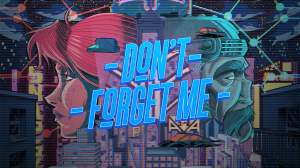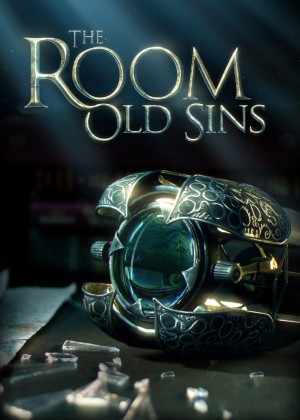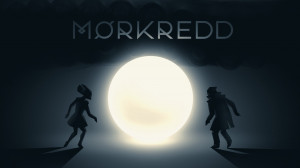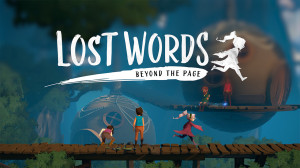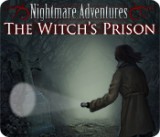Review for Don’t Forget Me
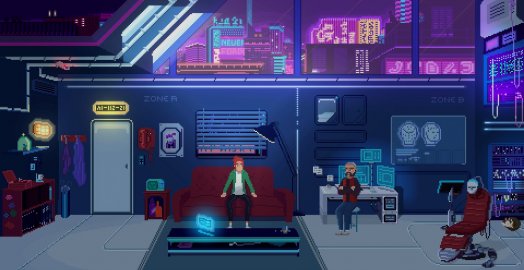
Memory is such a fundamental part of being human—essential to the development of identity, family, and society—that it’s astounding how little we actually know about it. What does it really mean to remember? How and why does it even work? For all that our brains provide physical storage, why can’t we save and share our memories as we do with computer data—and what would the world be like if we could? These questions and others like them are central to the premise of Don’t Forget Me, which posits a future where memories are stored in implanted chips, then reproduced, stored or deleted in underground clinics. It’s a rich premise for an adventure game that could have served as a jumping-off point for any number of interesting approaches to puzzle and story design. Unfortunately, this game instead devotes much of its energy to a frustrating mechanic involving guesswork and random blank-filling, and it fails to develop its plot, setting and characters in a satisfying way.
Most of the game takes place in a “memory clinic” run by a man named Bernard, a “copyist” who can extract memories from people’s implanted chips to create duplicate hard copies. It’s a fraught profession, as copying memories is illegal; if the government learned of his operation he’d be imprisoned or worse. One night he’s unexpectedly visited by Fran, a distraught woman who shows up at his front door and promptly collapses. After bringing her inside and trying to determine who she is, Bernard discovers that her chip is totally blank; all she knows for sure is her name, and in the absence of anywhere else to go she agrees to stay on with Bernard and help out around the clinic in hopes that her identity will come back to her.
The mystery of Fran’s identity is quickly swept aside, however, when a man shows up and introduces himself as an agent of the Forgotten, an underground group dedicated to ending the despotic hold the government exerts over the people via their memory chips. The Forgotten have recently discovered a sinister new phase in the regime’s plans, one that could crush human freedom and individuality forever, and they need a talented copyist to help them access the minds of those who would bring it to fruition. For the sake of humanity, you, as Fran, must set aside your reservations and join forces with Bernard and the Forgotten to put an end to the tyrannical project.
There’s a lot to process as you get your bearings, and Don’t Forget Me doesn’t give you much space to catch up. Most of the dialogue and puzzles feature long, inelegant monologues by Bernard about the nature, history and function of the memory chips and the world at large, but for all the game tries to build its world, it never establishes a consistent, comprehensible set of rules to govern it. Seemingly significant details, like the role robots play in society, are introduced and expounded on at length only to never be mentioned again. Characters bluntly detail their own personalities in conversation but rarely behave like the people they’re describing. The sinister plot that the Forgotten oppose is alternately attributed to “the government” and the head of the otherwise-unnamed “Megacorporation,” and it’s never clear if the two are separate, connected, or one and the same. Often you’ll have things explained one way only to see them work entirely differently in practice, so that the game’s world seems haphazard and improvised.
One of the first things we learn, for instance, is that there’s no way to read the memory duplicates Bernard produces. Like modern-day cryogenics advocates, people come to him hoping to preserve their memories until science has advanced enough that there’s a way to replay them. Despite this, a significant plot point revolves around looking into an inventor’s mind and discovering the plans for new memory-sharing tech ... at which point Bernard seemingly copies the memory of those plans to access and use later. One character is mentioned by name before he’s actually introduced himself as such; another’s role in developing the technology behind the chip is explained at length on her first appearance, only for it to be “revealed” later as if hadn’t come up before.
The problem is compounded by poor English translation, which can make the already-wordy dialogue a chore to read. Sometimes it’s just awkward, as when Fran sees a cat and observes, “She’s adorable! But the look in his eye is pretty lethal.” At others it’s incomprehensible, like when a character looks out over a cityscape and says, “Nothing could be discerned in its electric mantle.” More than once I got the feeling that the game had meant to give me a piece of information but that the concept simply hadn’t been adequately translated: characters speak repeatedly about how the advent of the memory chips brought an end to the decades-long “Meaningless War,” for instance, and seem to act as if the why and how have already been conveyed, but no such answer ever materialized that I saw. I spent large chunks of the game’s 3-4 hours wondering if I’d missed something; having completed and even replayed portions of it, I’m still not sure.
This proves especially damaging because several puzzles are based entirely around your being able to choose appropriate words in a given context. Bernard’s memory machine allows the operator to comb through a client’s mind to find the memory they need copied. You’ll do this via a text-based interface representing Fran’s computer terminal, where you enter words into a parser in an attempt to trigger an information “bubble” related to that memory. These puzzles, then, are entirely language-based, which means the game’s shaky translation goes from being an unfortunate immersion breaker to an unnecessary obstacle. Usually the solution requires one very specific word and won’t respond to anything else, so that “anger” might work while “angry,” “mad,” “upset,” or any number of synonyms won’t. At other times Bernard will refer to previously discovered bubbles using the wrong keyword: “solitary” for a bubble marked “solo,” for example.
Even ignoring the translation, though, the memory search mechanic just isn’t designed well. Don’t Forget Me wants to make you feel like a mind-hacker sneaking into the human psyche to uncover forbidden information, but in reality all these sequences amount to is a complicated guessing game with little to no skill involved. Each sequence begins with an abstract clue from Bernard about what you might want to try first, which is where the no-synonyms problem comes in; after that, though, he’ll describe the contents of each bubble you find, so that most of the time you just have to enter the terms he’s used until you find one that sticks.
There’s little apparent reason for why one search term will trigger a bubble while another won’t. Since everything Bernard says is related to the topic you’re investigating, any of the words he uses might theoretically apply, so finding the right one is less a matter of intuition and reasoning than of simple dumb luck. There’s also at least one place where the game’s own rules force it to telegraph a puzzle solution: the parser only accepts single, unpunctuated search terms, so when the unvoiced dialogue includes multiple words compounded awkwardly into one (i.e. “writingdesk” for “writing desk”), it becomes obvious that’s the one you need.
There are no consequences for wrong answers in the normal course of things, but occasionally a search term will uncover an “encrypted” portion of the client’s memory chip. Here you have a limited number of tries to find the bubbles you’re looking for; guess wrong too many times and you’ll be booted back to the previous sequence. If you want to try again you’ll have to input the original search term again and then repeat every step you’d made along the way. (Bernard initially warns you that the machine will self-destruct if you miss too many guesses in an encrypted area; this never happens, and the possibility is never discussed again.) This is a slog, pure and simple, and if I’d been playing the game on my own time I would have abandoned the encrypted portions after one or two tries. Thankfully they’re largely optional, but the information you find there can affect how the story unfolds.
Don’t Forget Me features a branching narrative, so that choices you make and the knowledge you discover (or fail to) can influence what happens and when. The differences aren’t just cosmetic; your actions determine whether or not certain characters are present at various points, and depending on how deeply you dig in a client’s memory—whether you play through all the encrypted segments, for instance, or continue to search for bubbles after you’ve found the ones you came for—you may or may not learn their full story. Once you’ve played through to the end you’ll get access to a “timeline” menu, which lets you go back to different points along your particular path and make alternate choices to see how they’d play out. This is especially helpful because the game autosaves at preset points, with no manual save feature, so that quitting can sometimes mean having to retrace multiple steps when you come back.
For all the emphasis it places on different outcomes, though, the game treats its finale almost as an afterthought. Your decisions throughout will determine who joins you during the climax, what you know about them, and your way of relating to the main villain. When the time comes to make a final choice, though, your selection concludes the game almost immediately. The end comes so quickly, in fact, that I checked online to make sure I hadn’t accidentally skipped a final cutscene. On finding I hadn’t, I went back to see how other selections played out and the results were equally abrupt. Further research showed that, surprisingly, I was playing the updated version of the game, which patched the ending in order to provide more closure; if this is the version with longer endings I can only imagine how truncated the original felt.
Still, the choice-based mechanic is sound otherwise, and it makes some of your work in the memory clinic especially rewarding. There are two types of clients you’ll interact with: the ones the Forgotten send to you, who are related to the conspiracy in some way and who possess information you need, and the everyday citizens who come to the clinic in the normal course of things. It’s the latter who provide the most interesting moments and whose memories come closest to providing the game’s promised mind hacking and mystery solving. Midway through the game, Bernard acquires a new technology that allows him to not only copy but delete memories entirely; demand for this service proves unexpectedly high, with citizens practically beating down the clinic door to be rid of painful or inconvenient recollections.
In practice, this new tech projects Fran into a client’s memory through a sort of VR experience, where she must search for specific objects that tie the client to that place and time. This allows you to actually spend time walking around inside a memory, searching for clues to what happened instead of blindly guessing via the text interface. The small self-contained stories you’ll experience through these clients’ minds are by far the most challenging and fun parts of the game, and the payoff for choosing to explore these characters’ memories as fully as possible is very satisfying. If the game had focused more on telling its story this way than on the text-parser sequences, it would have been a much stronger title. As it is, the uneven split between the two methods seems emblematic of a game that can’t decide what it wants to be.
When not operating Bernard’s machine, you control Fran in third person using WASD, with a dedicated context-sensitive key for looking at/interacting with hotspots in the environment. (These are unmarked; you’ll just have to walk around, press the button if you see something interesting and move on if nothing happens.) There are also dialogue trees, which you likewise navigate using WASD. The memory-sharing sequences look and play identically to the real-world ones, with Fran projected directly into the scenery of the visiting client’s memory. Bernard will tell you once you’ve found what you came for, but you’re free to stay and search for more information or leave as you see fit. There’s no traditional inventory at any point; if Fran needs something she’ll pick it up when interacting with it, then use it automatically where it’s needed.
For the most part the game’s pixel art aesthetic is pleasing to the eye, albeit not particularly distinctive. Background animations help to give the nameless city a lived-in feel, with silhouetted patrons glimpsed milling about on the upper floor of a piano bar and flying vehicles cruising past panel windows. Characters’ speaking animations appear rudimentary by contrast, consisting of simple, repetitive motions. If a person says something lighthearted, for example, they bob up and down rapidly as if laughing hysterically, and they won’t stop until you press a key to advance the dialogue. The text-based segments are less appealing still, with about as much visual flair as a 1980s word processor; here there are only a few colors and some circles joined by lines on-screen to accompany the uninteresting puzzles. The soundtrack is full of pleasant synth-jazz tracks, with the dreamy piece playing in Bernard’s favorite drinking spot a particular standout. Still, I can’t say that the game does anything beyond this to justify the self-applied “jazz-punk” title that’s been so prominent in its marketing.
The memory-deletion puzzles and branching storyline show enough promise that I’d hesitate to write Don’t Forget Me off entirely—it isn’t a bad game, per se, just not a successful one. The world and characters feel thinly sketched and underdeveloped, the text puzzles border on irredeemable, and the sudden endings leave the whole experience feeling unfinished. The good parts might stand out more significantly from the bad in the original French, but with a rough translation compounding an already troublesome script, there’s a lot that would need to happen for this to be worth recommending.


